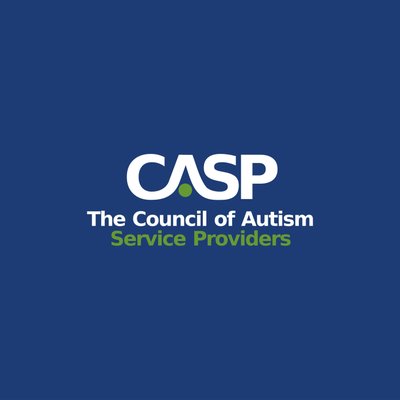Autism is a term that’s now widely recognized, often appearing in conversations about child development, education, and neurodiversity. But it wasn’t always this way. There was a time when the unique behaviors and needs of autistic individuals were misunderstood, misdiagnosed, or simply ignored.
So, when did things begin to change? When was autism first identified, and how did our understanding of it evolve into what we know today? Let’s find out!
When Was Autism Identified?
Autism was first formally identified in the early 20th century, though behaviors now associated with autism had been described for centuries.
The term “autism” was introduced in 1911 by Swiss psychiatrist Eugen Bleuler to describe a symptom of schizophrenia, referring to social withdrawal and detachment from reality. However, it wasn’t until the 1940s that autism was recognized as a distinct developmental condition.
In 1943, American psychiatrist Dr. Leo Kanner published a paper describing 11 children who displayed “autistic disturbances of affective contact,” noting their challenges with social interaction, communication, and repetitive behaviors. Almost simultaneously, Austrian pediatrician Hans Asperger documented similar traits in children who had more advanced language and cognitive skills, leading to the later classification of Asperger’s Syndrome.
DSM-III Criteria in 1980
The next major advancement in autism identification came in 1980 with the publication of the third edition of the Diagnostic and Statistical Manual of Mental Disorders (DSM-III). This version classified autism as a “pervasive developmental disorder” separate from schizophrenia. The DSM-III established specific criteria for diagnosing autism, which included:
- Severe impairment in communication
- Lack of interest in people
- Bizarre responses to the environment
- Symptoms must develop within the first 30 months of life
This classification provided a clearer framework for recognizing and diagnosing autism, allowing for more effective interventions and support for individuals and families affected by the disorder.
Recognition as a Spectrum Disorder
The understanding and classification of autism have evolved significantly over the years, leading to important changes in how the disorder is identified and supported. This transition has been marked by key updates in diagnostic manuals.
In 1994, the DSM-IV officially recognized autism as a spectrum disorder. This edition listed five distinct conditions with unique characteristics. Since then, the classification in the DSM-IV allowed for a better understanding of the diversity within the autism spectrum.
The release of the DSM-5 in 2013 brought about a significant shift in autism diagnosis and classification. It combined all previously separate subcategories into a single diagnosis known as autism spectrum disorder.
This redefinition aimed to streamline the diagnostic process and provide a clearer framework for understanding autism.
That said, autism spectrum disorder is characterized by:
- Impaired social communication
- Restricted and repetitive patterns of behavior
The transition to a unified classification eliminated Asperger Syndrome as a distinct diagnosis, promoting a more inclusive view of the spectrum. This change has implications for interventions and support, emphasizing the need for tailored strategies that address the individual strengths and challenges of each person with autism. For a practical approach to one such strategy, explore our article, A Guide to Functional Communication Training in ABA, which outlines effective ways to build meaningful communication skills through evidence-based methods.

Reframing Autism
The perception and classification of autism have evolved significantly over the years. Two major milestones in this evolution include the shift from viewing autism as childhood schizophrenia and the introduction of Pervasive Developmental Disorder-Not Otherwise Specified (PDD-NOS) in 1987.
Historically, autism was often viewed through the lens of childhood schizophrenia, which suggested that it stemmed from cold and unemotional parenting.
This understanding persisted into the 1960s and 1970s. However, in 1980, the third edition of the Diagnostic and Statistical Manual of Mental Disorders (DSM-III) redefined autism as a “pervasive developmental disorder” distinct from schizophrenia.
The DSM-III established specific diagnostic criteria that emphasize severe communication impairments, lack of interest in social interactions, and atypical responses to environmental stimuli occurring within the first 30 months of life.
This marked a critical shift in recognizing autism as a developmental condition rather than a psychiatric disorder.
The understanding of autism continued to evolve with the DSM-III revision in 1987. This edition expanded the concept of autism by adding a new diagnosis: Pervasive Developmental Disorder-Not Otherwise Specified (PDD-NOS).
This classification allowed for the recognition of individuals who exhibited some but not all of the classical symptoms of autism. Notably, the revision also eliminated the requirement that symptoms must manifest before 30 months of age.
This adjustment acknowledged autism as a spectrum of conditions that can present at various stages of life, reflecting a broader understanding of the disorder’s complexity.
These changes signified an important shift in how autism was perceived, leading to increased awareness and acceptance of varying autism presentations.
Contemporary Perspectives
The DSM-5 represented a significant shift in understanding autism. This edition combined all previously separate condition subcategories under the umbrella diagnosis of autism spectrum disorder. Notably, this led to the elimination of Asperger’s Syndrome as a distinct diagnosis.
Thus, autism spectrum disorder is now characterized by two main domains: impaired social communication and restricted, repetitive behaviors.

Moreover, the draft of the ICD-11 mirrors the criteria established by the DSM-5. This edition sets broader, less culturally specific criteria and introduces a distinction between autism with and without intellectual disability.
The ICD-11 also recognizes that older individuals and women may mask their autism traits, which can impact diagnostic processes and understanding.
These contemporary perspectives in diagnostic manuals reflect a deeper understanding of autism, which enhances the ability for parents, caregivers, and individuals on the spectrum to seek appropriate interventions and support tailored to their specific needs. One approach gaining attention is home education—explored in depth in our article, How Home Education Helps Autistic Children Thrive—which offers a flexible, individualized learning environment that many families find beneficial.
Final Thoughts
Long story short, our understanding of autism has come a long way. What began as a misunderstood condition tied to schizophrenia is now recognized as a unique neurodevelopmental profile with diverse traits and needs. With
With evolving diagnostic criteria and a growing awareness of individual differences, we’re moving toward a future that better supports and includes autistic individuals in every aspect of life. At Golden Care Therapy, we’re proud to be part of that progress by offering compassionate, evidence-based ABA therapy in Georgia, New Jersey, Indiana, New York, and Florida. Our dedicated therapists focus on building meaningful connections and tailoring every program to fit the unique needs of each child we serve. If you’re ready to see how personalized ABA services can make a difference, contact us today — we’re here to help your child thrive.
Sources:



